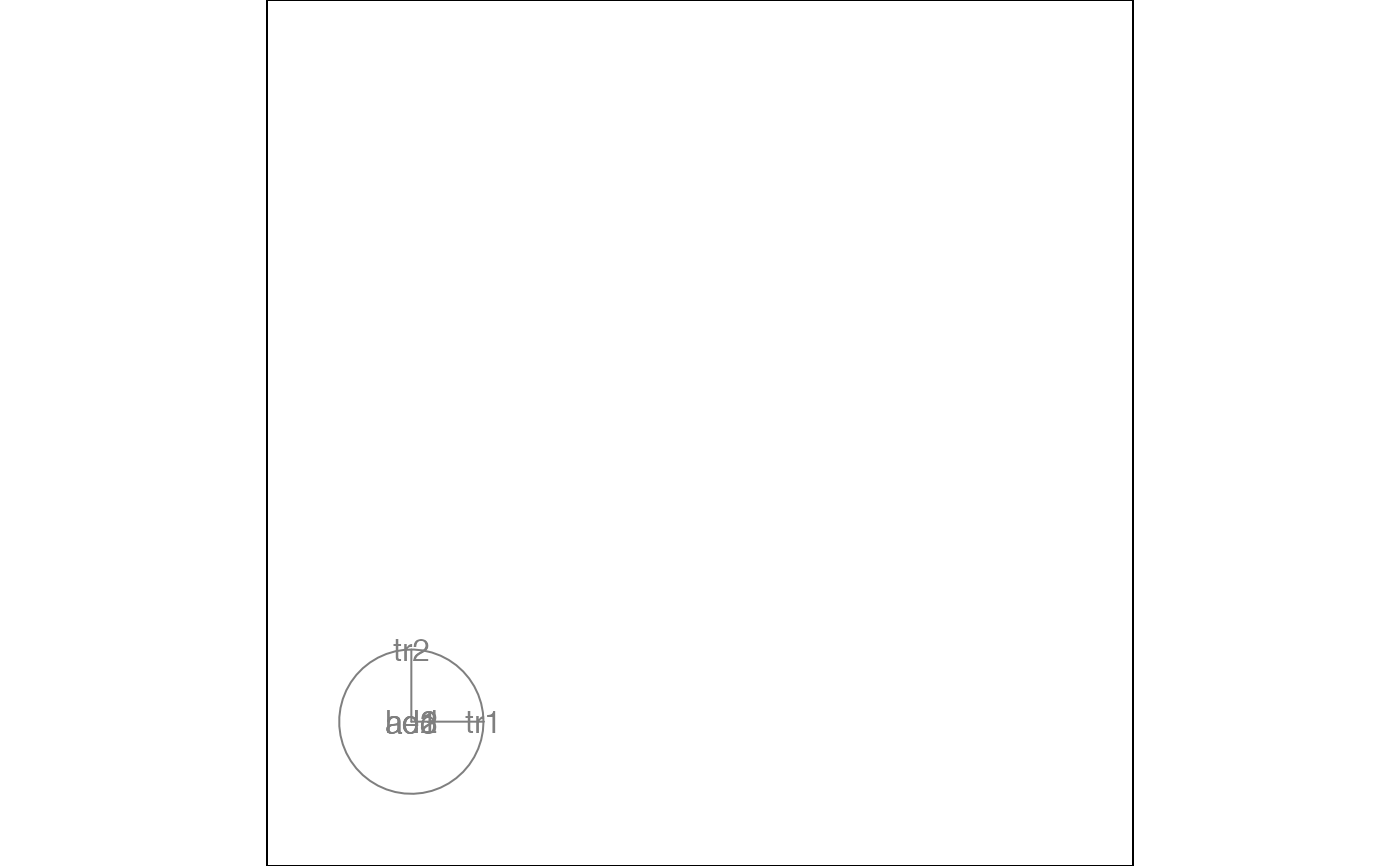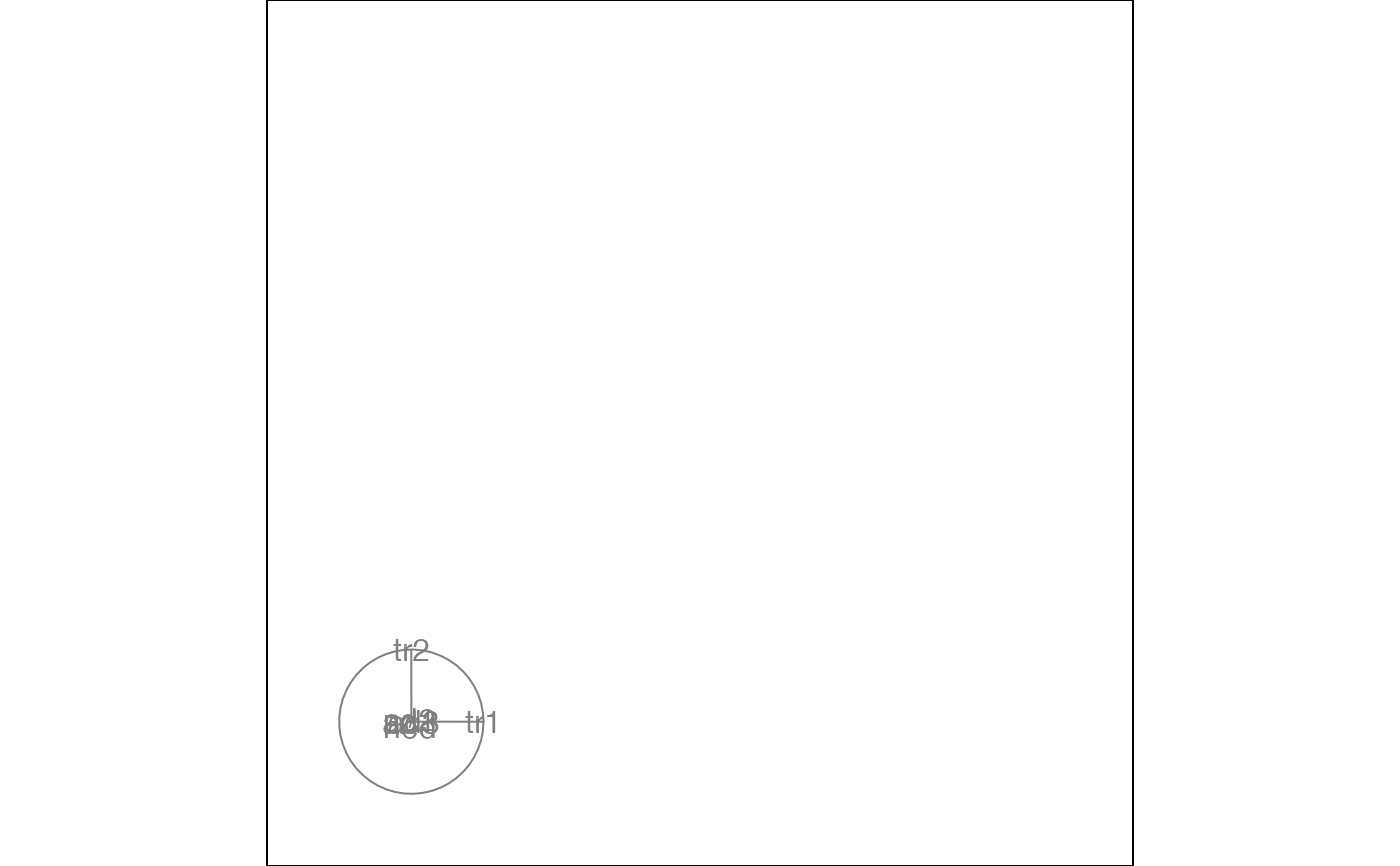Animate a 2D tour path with density contour(s) and a scatterplot.
display_density2d(
center = TRUE,
axes = "center",
half_range = NULL,
col = "black",
pch = 20,
cex = 1,
contour_quartile = c(0.25, 0.5, 0.75),
edges = NULL,
palette = "Zissou 1",
axislablong = FALSE,
...
)
animate_density2d(data, tour_path = grand_tour(), ...)Arguments
- center
if TRUE, centers projected data to (0,0). This pins the center of data cloud and make it easier to focus on the changing shape rather than position.
- axes
position of the axes: center, bottomleft or off
- half_range
half range to use when calculating limits of projected. If not set, defaults to maximum distance from origin to each row of data.
- col
color to use for points, can be a vector or hexcolors or a factor. Defaults to "black".
- pch
shape of the point to be plotted. Defaults to 20.
- cex
size of the point to be plotted. Defaults to 1.
- contour_quartile
Vector of quartiles to plot the contours at. Defaults to 5.
- edges
A two column integer matrix giving indices of ends of lines.
- palette
name of color palette for point colour, used by
hcl.colors, default "Zissou 1"- axislablong
text labels only for the long axes in a projection, default FALSE
- ...
other arguments passed on to
animateanddisplay_density2d- data
matrix, or data frame containing numeric columns
- tour_path
tour path generator, defaults to 2d grand tour
Examples
animate_density2d(flea[, 1:6])
#> Converting input data to the required matrix format.
#> Using half_range 4.4



 animate(flea[, 1:6], tour_path = grand_tour(), display = display_density2d())
#> Converting input data to the required matrix format.
#> Using half_range 4.4
animate(flea[, 1:6], tour_path = grand_tour(), display = display_density2d())
#> Converting input data to the required matrix format.
#> Using half_range 4.4



 animate(flea[, 1:6],
tour_path = grand_tour(),
display = display_density2d(axes = "bottomleft")
)
#> Converting input data to the required matrix format.
#> Using half_range 4.4
animate(flea[, 1:6],
tour_path = grand_tour(),
display = display_density2d(axes = "bottomleft")
)
#> Converting input data to the required matrix format.
#> Using half_range 4.4



 animate(flea[, 1:6],
tour_path = grand_tour(),
display = display_density2d(half_range = 0.5)
)
#> Converting input data to the required matrix format.
animate(flea[, 1:6],
tour_path = grand_tour(),
display = display_density2d(half_range = 0.5)
)
#> Converting input data to the required matrix format.



 animate_density2d(flea[, 1:6], tour_path = little_tour())
#> Converting input data to the required matrix format.
#> Using half_range 4.4
animate_density2d(flea[, 1:6], tour_path = little_tour())
#> Converting input data to the required matrix format.
#> Using half_range 4.4



 animate_density2d(flea[, 1:3], tour_path = guided_tour(holes()), sphere = TRUE)
#> Converting input data to the required matrix format.
#> Target: 0.937, 9.8% better
#> Using half_range 3.5
animate_density2d(flea[, 1:3], tour_path = guided_tour(holes()), sphere = TRUE)
#> Converting input data to the required matrix format.
#> Target: 0.937, 9.8% better
#> Using half_range 3.5



 animate_density2d(flea[, 1:6], center = FALSE)
#> Converting input data to the required matrix format.
#> Using half_range 4.4
animate_density2d(flea[, 1:6], center = FALSE)
#> Converting input data to the required matrix format.
#> Using half_range 4.4



 # The default axes are centered, like a biplot, but there are other options
animate_density2d(flea[, 1:6], axes = "bottomleft")
#> Converting input data to the required matrix format.
#> Using half_range 4.4
# The default axes are centered, like a biplot, but there are other options
animate_density2d(flea[, 1:6], axes = "bottomleft")
#> Converting input data to the required matrix format.
#> Using half_range 4.4



 animate_density2d(flea[, 1:6], axes = "off")
#> Converting input data to the required matrix format.
#> Using half_range 4.4
animate_density2d(flea[, 1:6], axes = "off")
#> Converting input data to the required matrix format.
#> Using half_range 4.4



 animate_density2d(flea[, 1:6], dependence_tour(c(1, 2, 1, 2, 1, 2)),
axes = "bottomleft"
)
#> Converting input data to the required matrix format.
#> Using half_range 4.4
animate_density2d(flea[, 1:6], dependence_tour(c(1, 2, 1, 2, 1, 2)),
axes = "bottomleft"
)
#> Converting input data to the required matrix format.
#> Using half_range 4.4
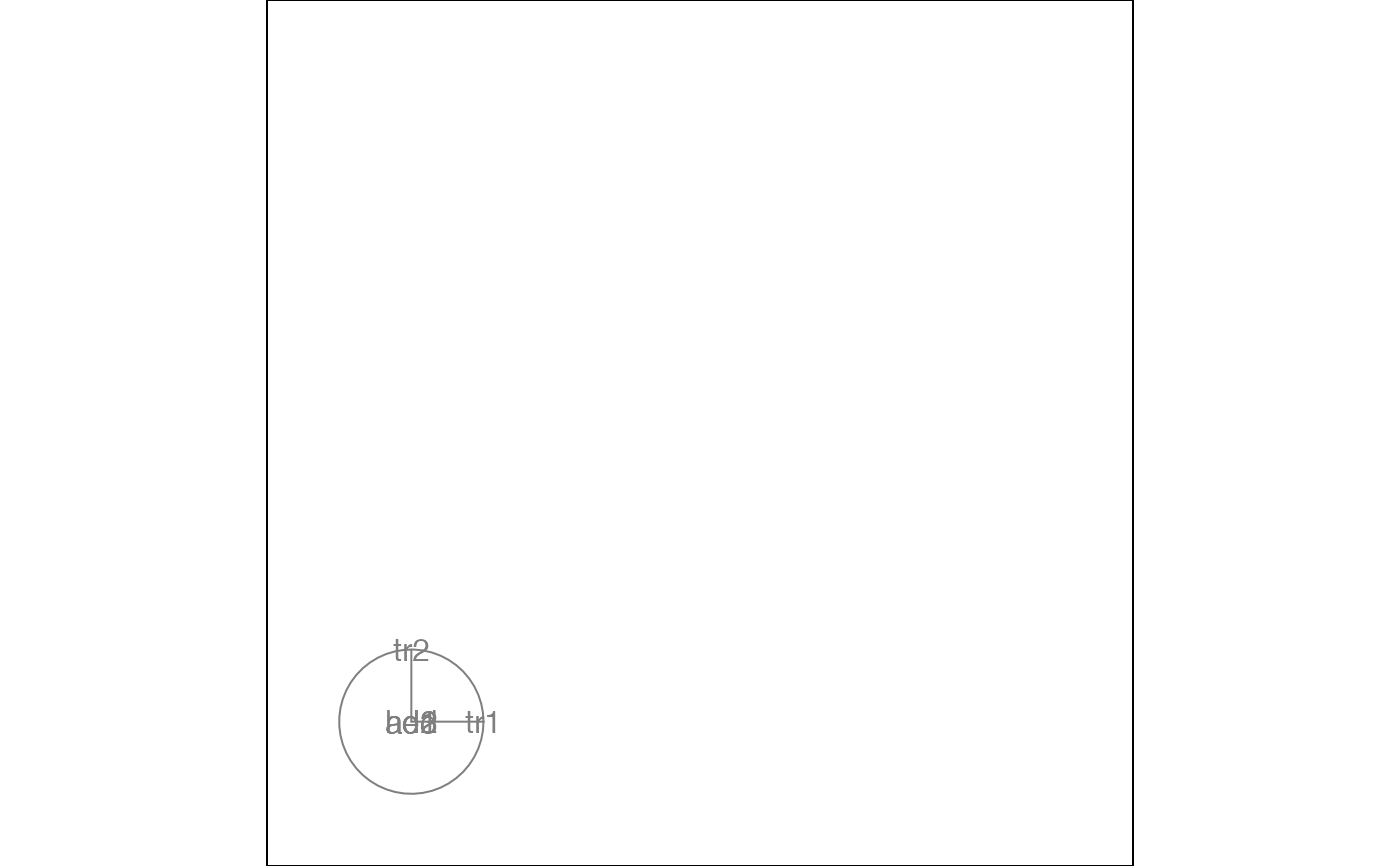

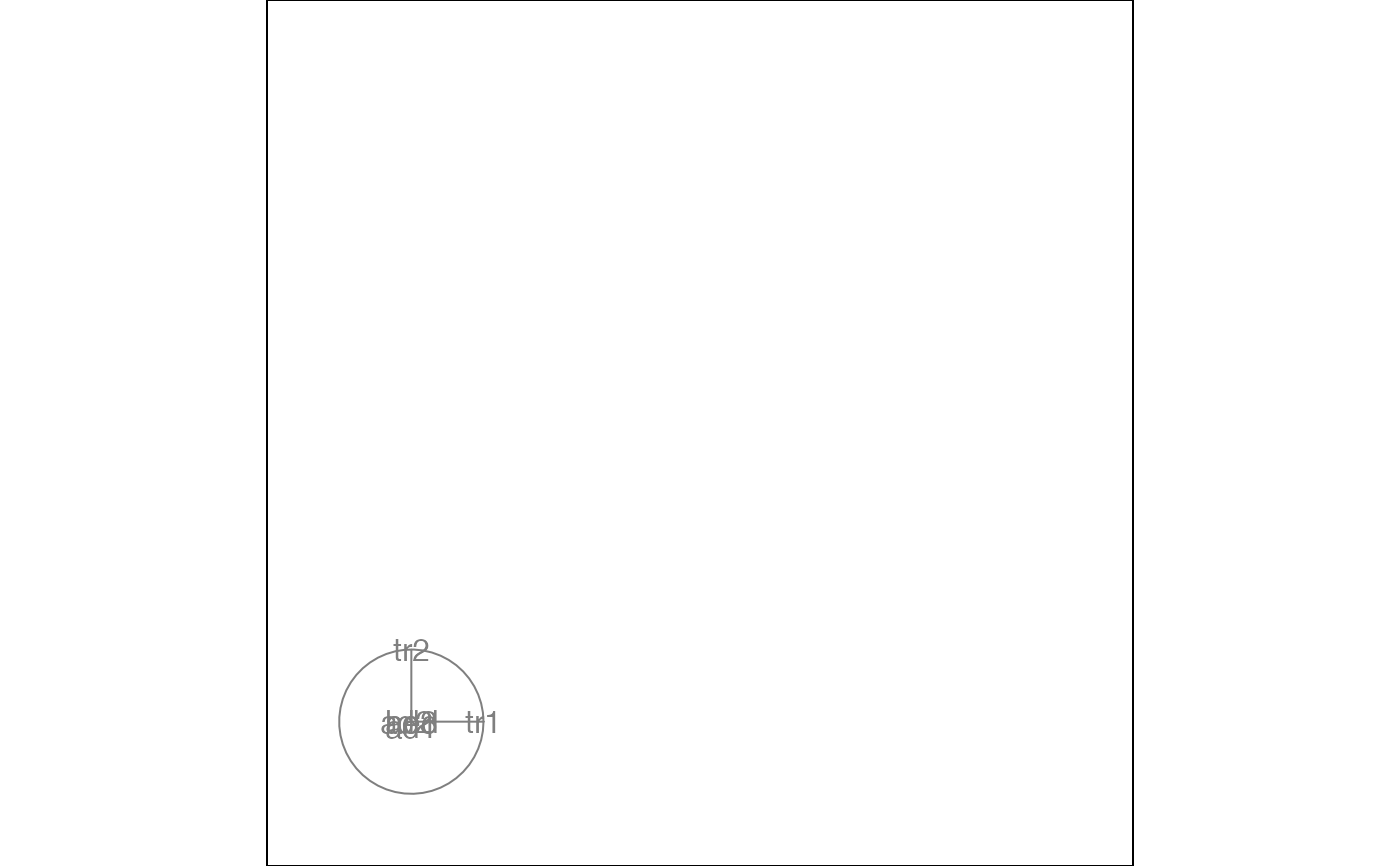
 animate_density2d(flea[, -7], col = flea$species)
#> Converting input data to the required matrix format.
#> Using half_range 4.4
animate_density2d(flea[, -7], col = flea$species)
#> Converting input data to the required matrix format.
#> Using half_range 4.4
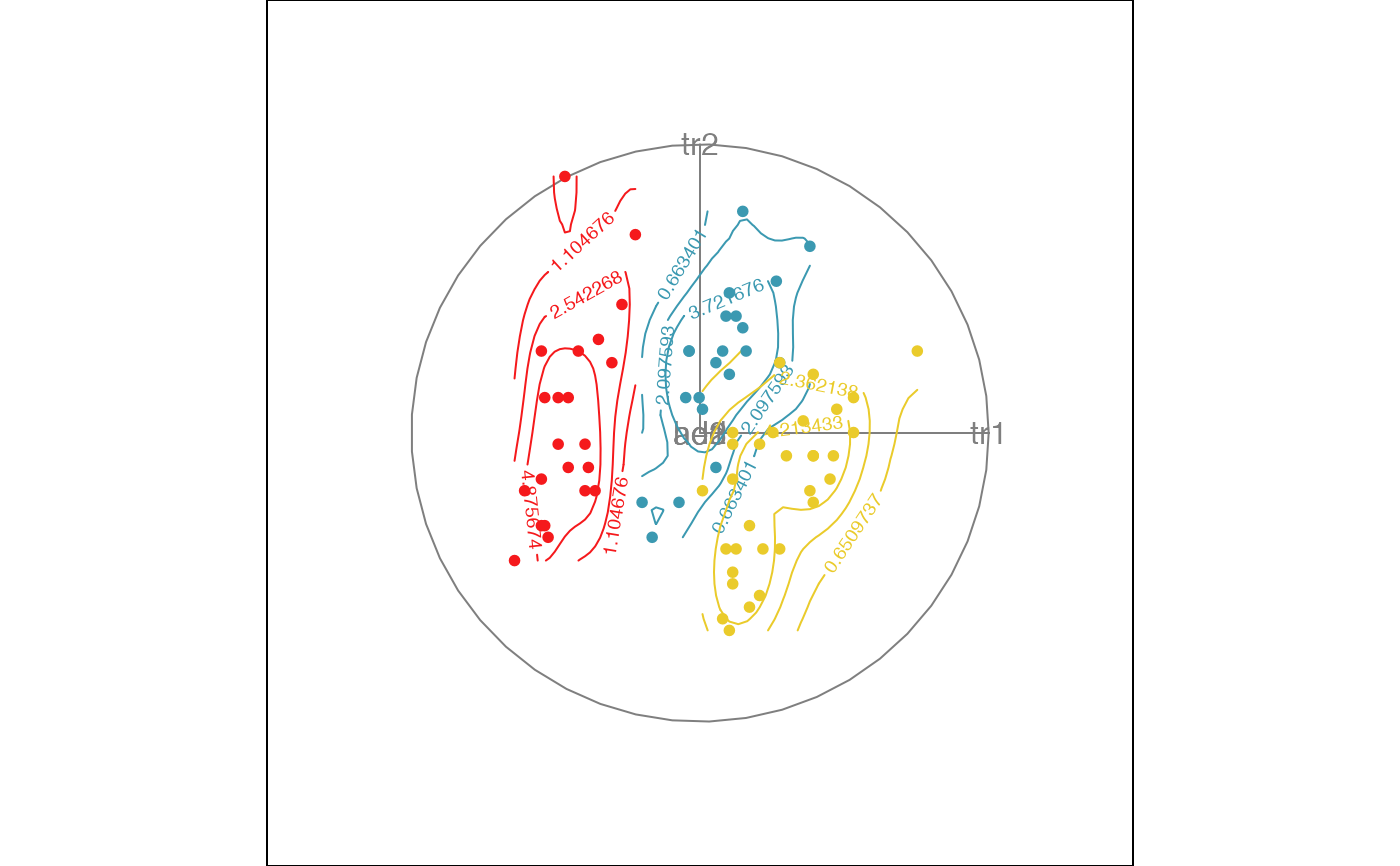
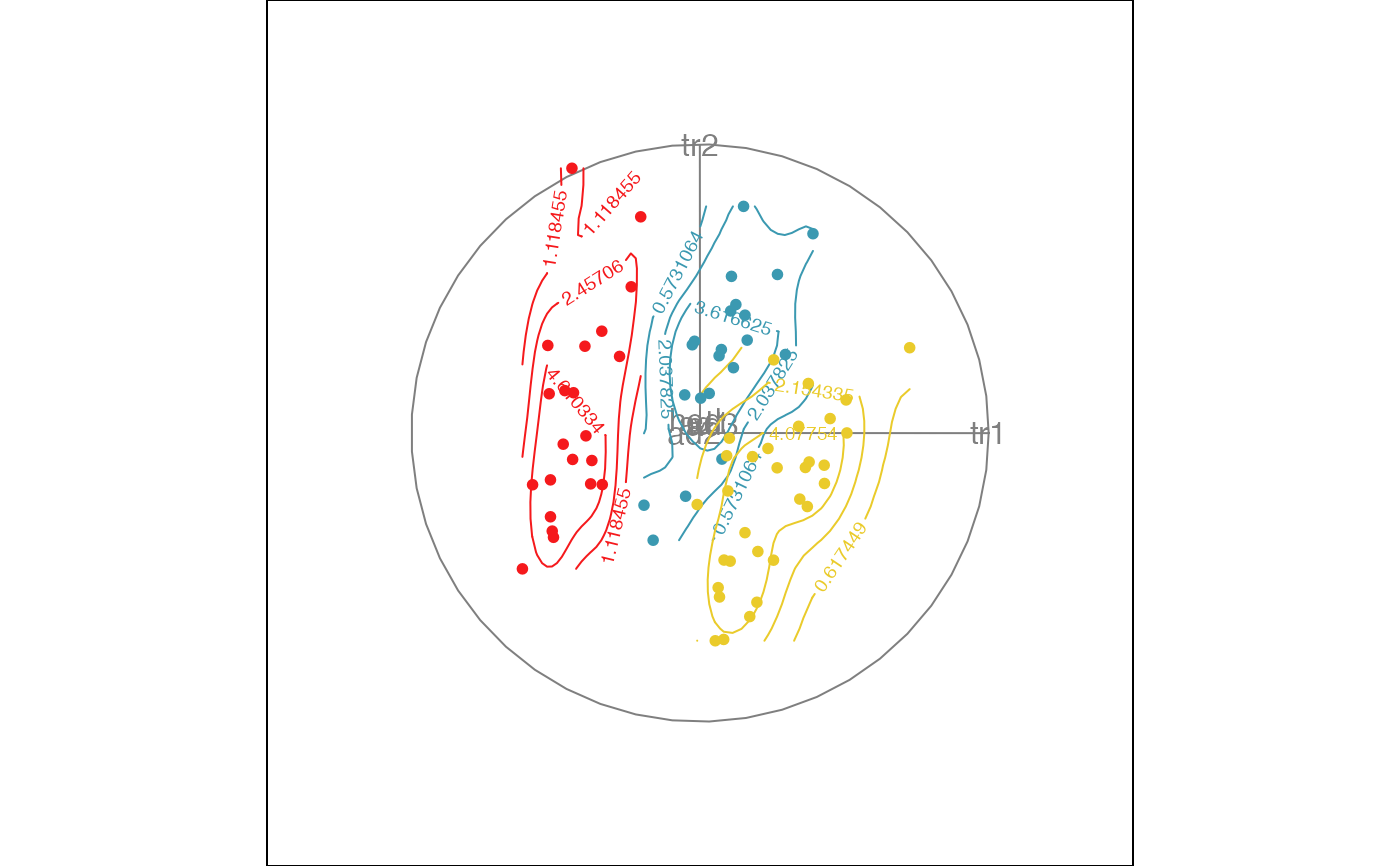 # You can also draw lines
edges <- matrix(c(1:5, 2:6), ncol = 2)
animate(
flea[, 1:6], grand_tour(),
display_density2d(axes = "bottomleft", edges = edges)
)
#> Converting input data to the required matrix format.
#> Using half_range 4.4
# You can also draw lines
edges <- matrix(c(1:5, 2:6), ncol = 2)
animate(
flea[, 1:6], grand_tour(),
display_density2d(axes = "bottomleft", edges = edges)
)
#> Converting input data to the required matrix format.
#> Using half_range 4.4
